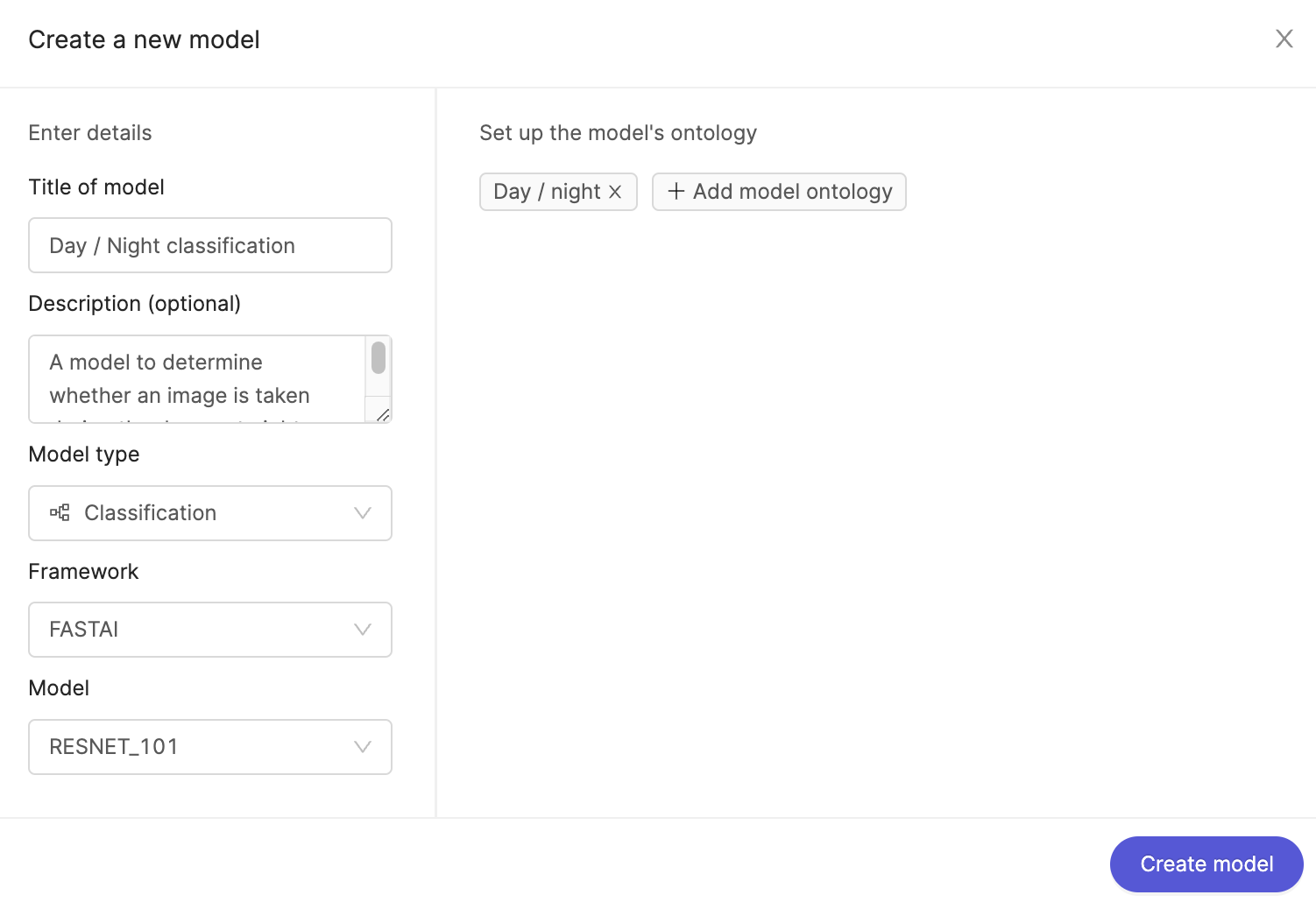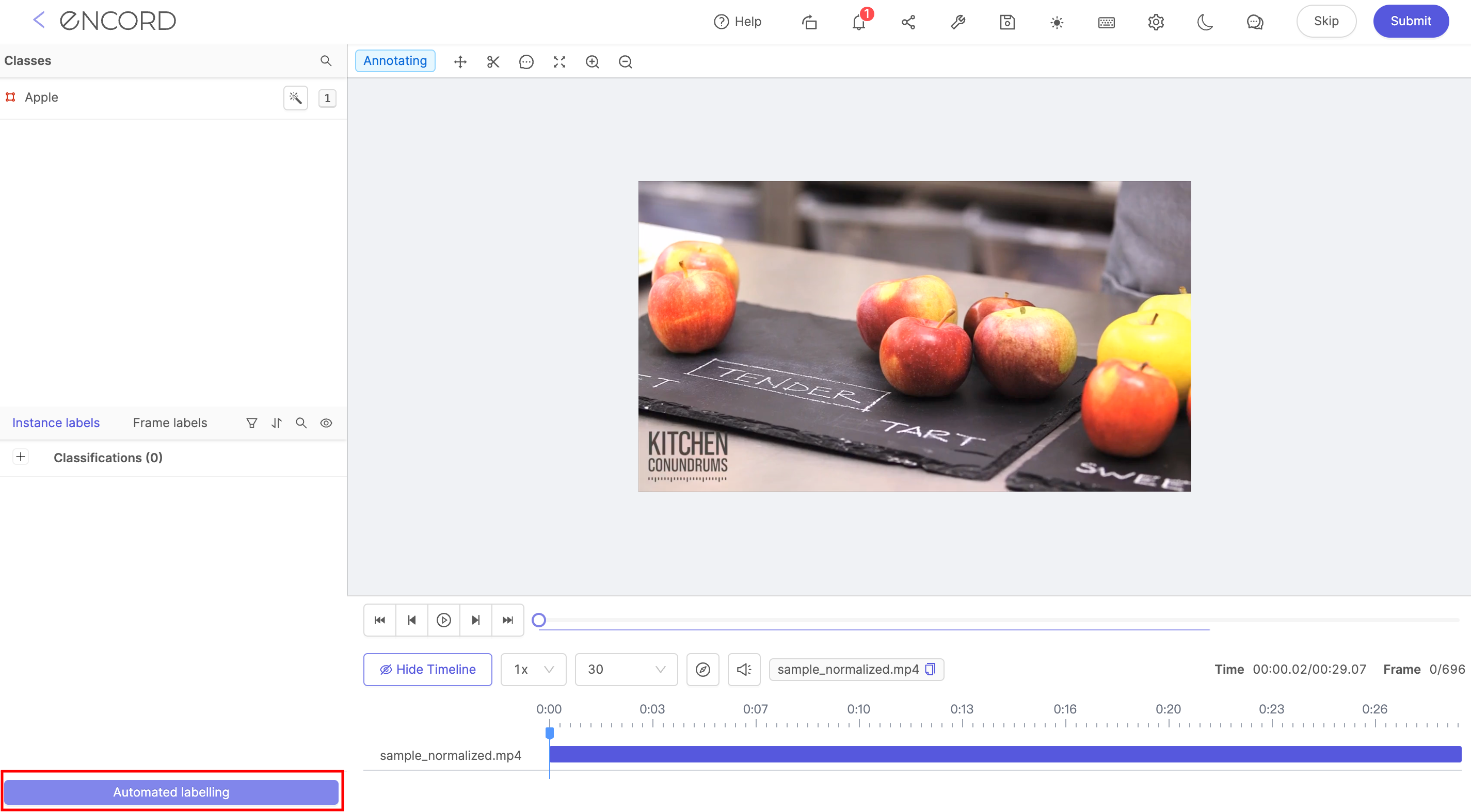Classification models assume there is only one correct class per image.

Framework and models
The FastAI framework is available for classification models, and it supports a wide range of architectures. These include various sizes of ResNet and VGG.Creating classification models
To learn how to create classification models, head over to our models page.Working with classification models
Once a model has been attached to a project it can be used to perform the functions it has been trained on. Inside the label editor, click the Automated labeling button highlighted in the image below.

- Select the model you would like to run. You will be able to choose from a list of models previously attached to the project.
- Specify the Classification range to set the range of frames over which the model is run.
- Set the Confidence. A value ranging from 0 to 1 that represents how confident the model has to be in order for a particular data point to be included in its output. Read more about confidence values here.
Advanced settings
- Choose whether the model should run on a GPU or CPU (The choice may be limited by the execution environment). CPUs are designed to handle a wide-range of tasks quickly, but are limited in how many tasks can run at the same time. GPUs are designed to quickly render high-resolution images and video concurrently.
Attributes are only predicted when the ‘parent’ classification has already been made. Consider the case where we have a classification structure that asks ‘Is there a car in the frame?’ and if the answer is yes, then we also have a nested question of ‘Is the car red?’. If you run a model that trains on ‘Is the car red?’, it will only return inference results for frames that you have classified as having a car in the frame. This ensures conditional relationships are always enforced with automated labelling as well.

